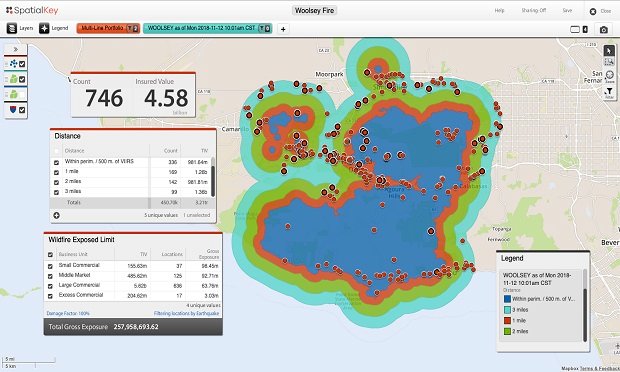Read Nieuwendam's previous article in thisseries, "Putyour data to work."
||
The three areas where a company can capitalize on predictiveanalytics are marketing, claims and underwriting.
|Marketing has traditionally relied on referrals from agents orother sources to advance the business, which has resulted in atraditionally conservative methodology for growth and has causedcompanies to expand their premium growth at a very slow rate. Now,predictive analytics cannot only be used to measure the buyinghabits of existing companies, but can also provide insights intopotential customers and captive and non-captive agencies and theirselling habits. Use of these practices will undoubtedly show apositive impact on a company's hit and stick ratios!
|Within claims, $30 billion a year is lost in the property andcasualty industry alone, mostly due to fraudulent claims. Usingpredictive analytics, a claims department can limit the occurrenceof Type I and Type II errors. It can also be used to prioritizeclaims by looking at past trends where a submitted claim hasresulted in a higher loss amount based on its own internal claimshistory.
|For underwriting, predictive analytics have evolved from thetraditional methodologies to utilizing the current advances inpredictive analytics to predict pricing and future losses withuncanny accuracy. Predictive analysis allows the underwriter to"filter out" the normal underwriting cases and focus solely on theexceptions to the human underwriter. By automating this process,underwriters are spending less and less time screening potentialapplicants that would pass the underwriting screening. Instead,they are focusing on potential cases where an application woulddisqualify an individual, thereby resulting in only qualityapplicants that meet the underwriting guidelines making thecut.
|Statistically, 100% of P&C companies with more than$1 billion in earnings use predictiveanalytics. This might attribute to the reasontheir earnings are much higher than companies that do not. Smallercompanies would also benefit significantly by adopting thesepractices; however, many companies mistakenly believe thatpredictive analytics are complex and very costly.
|What many smaller companies don't focus on is the ROI thatnaturally comes with a good predictive analytics strategy. It ismore about execution than tools: the most expensive tool in theworld can fall in the hands of the wrong analyst.
|There are three considerations for predictive analysis:
- Data sources
- Data mining
- Deployment.
Many companies begin with data warehousing and OLAP (OnlineAnalytic Processing).
|The most efficient data warehousing architecture will be capableof incorporating or at least referencing all data available in therelevant enterprise-wide information management systems, usingdesignated technology suitable for corporate data base management.Most companies already leverage some form of Microsoft SQL Serverin the enterprise.
|OLAP, which is also referred to as FASMI (Fast Analysis ofShared Multidimensional Information), allows users to createreal-time "views" from multiple data sources.
|OLAP facilities can be integrated into corporate environments aspart of a data warehouse strategy to provide a tool for managersand analysts to view various metrics, not only across theenterprise, but also within the market and potential markets. Viewsfrom the same data source can be tailored to the use case; forinstance, a marketing department will receive actionable data thatmay differ from a view that is presented to a claimsdepartment.
|Although data mining techniques can operate onany kind of unprocessed or even unstructured information, they canalso be applied to the data views and summaries generatedby OLAP to provide more in-depth and often moremultidimensional knowledge. In this sense, data mining techniques could beconsidered to represent either a different analytic approach(serving different purposes than OLAP) or as an analyticextension of OLAP.
|Next page: It's your data, so why not put it to workfor you?
||
It's your data, so why not put it to work foryou?
There are many benefits to implementing apredictive analytics strategy as part of a company's overall datastrategy. The advantages far outweigh the disadvantages, and theinvestment can be minimal if you do your research.
The pros are obvious:
- Increase sales through analyzing buying patterns of existingand potential customers
- Limit the underwriting cycle to make underwriters moreefficient by focusing on the risks, not the normalcies
- Create predictive scores and rating systems
- Decrease the likelihood of fraudulent claims and score claimsby the likely size of the settlement to determine which claims arehigh priority.
The cons are a little less obvious but can be very costly:
- Inconsistencies in your predictive model
- Cost of implementing predictive analytics techniques
- Resistance to changes in reporting within the organization
- The need for clean and accurate data sources, which generallydon't exist at face value in most companies.
For this reason, even small to mid-size companies shouldbegin to consider and embrace data warehouse technologies as ameans of moving toward predictivemodels. The biggest argument againstpredictive analysis is it can never determine human behavior like aseasoned underwriter is able to; however, predictive analysis ismeant to augment, rather than replace the "seasoned" underwriter.It helps the underwriter, marketing or claims executive to makeinformed decisions about the direction they need to take, therebyenabling the enterprise to make intelligent, informed decisionsbased on historical data or trends that have occurred in thepast.
|It has been said that "history is bound to repeat itself." Withproperly-implemented predictive analytics, you can be sure that ifit does, your company will be prepared for it.
|Read Nieuwendam's previous article in thisseries, "Putyour data to work."
Want to continue reading?
Become a Free PropertyCasualty360 Digital Reader
Your access to unlimited PropertyCasualty360 content isn’t changing.
Once you are an ALM digital member, you’ll receive:
- All PropertyCasualty360.com news coverage, best practices, and in-depth analysis.
- Educational webcasts, resources from industry leaders, and informative newsletters.
- Other award-winning websites including BenefitsPRO.com and ThinkAdvisor.com.
Already have an account? Sign In
© 2024 ALM Global, LLC, All Rights Reserved. Request academic re-use from www.copyright.com. All other uses, submit a request to [email protected]. For more information visit Asset & Logo Licensing.








